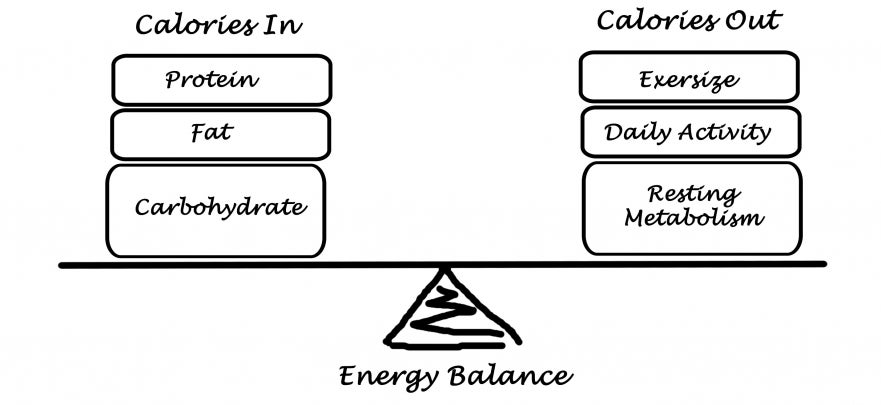How to Burn More Calories Than You’re Eating
Burning more calories than you eat in a day is referred to as a “Calorie Deficit” and is the basis of many weight loss equations. The idea is daily calories in minus daily calories out = caloric deficit. The first thing you need to understand is that one pound of fat is made of about 3,500 of extra calories. Therefore in order to lose one pound of fat, you need to create a caloric deficit of 3,500 calories. For example if you wanted to lose one pound a week ~3,500/7= 500. That means negative 500 calories a day overall.
There are only 3 ways you can create a deficit of calories each day:
1. Eat fewer calories than you burn each day. Keep in mind that your body burns calories all day long as part of your basal metabolic rate (BMR), because it takes energy (calories) for your body to perform basic functions that are necessary for life—breathing, digesting, circulating, thinking and more. It's important for you to know what your BMR is so you can estimate how many calories you burn in an average day. In addition to that, you also burn some calories with normal daily activities like bathing, cleaning, walking, typing and exercising (which uses even more calories each day). SO by simply taking in less calories each day, that means less excess calories you have to burn off. Easy ways to do this include: eat less fast food or junk food, eat more fresh vegetables and fruits, eat lean protein, reduce the amount of bad fats, and drink more water.
2. Burn more calories than you consume by increasing your physical activity. If you eat enough calories to support your BMR, but add more exercise, you'll create a caloric deficit simply by burning extra calories. This only works if you're not overeating to begin with. Example: If you exercise more to burn an extra 500 calories each day, you'll lose about one pound of fat in a week (500 calories x 7 days = 3,500 calories). You can workout more or just add more movement into your daily lifestyle. Some ideas: ride your bike walk rather than driving places, always take the stairs, move around at work rather than sitting a desk, play with your kids or dog, do squats while watching tv. Get creative with your day, the possibilities are endless!
3. A combination of eating fewer calories AND exercising to burn more calories. This is the most effective way to lose weight and keep it off. It's much easier to create a substantial calorie deficit when you combine eating less with exercise because you don't have to deprive yourself so much, or exercise in crazy amounts. Studies show that the combination of diet and exercise are compounded to increase weight loss more than the equivalent of one method alone. One theory is that the exercise increases metabolism which rev’s the fat burning even more. Example: If you cut 200 calories a day from your diet and burned 300 calories a day by exercising, you'd lose about one pound per week. Compare that to the other examples above—so you're losing weight at about the same rate without making such extreme changes to your diet or exercise routine.
The key to any successful weight loss is CONSISTENCY. Over time your calorie deficit will "add up", and you will lose the extra weight. But remember to be super accurate with your caloric intake and exercise because after all it is a math equation. It's also important to note that although this seems like simple math, our bodies are actually very complicated. We also have emotions, hormones, stress and more that can factor into the equation so you might not always see the results you expect based on equations alone.






